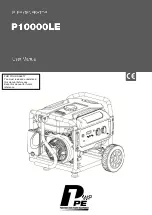
AUDIO KONTROL 1 – 82
Section 7.4, describing the Mapping Application user interface (below) will help
you in getting familiar with this concept of Layers. It’s a key concept, which allows
you to multiply the assignment possibilities of your AUDIO KONTROL 1. Some of
the quickstarts (section 5) and Use Cases (sections 6) show examples of using
this Modifier mode.
7.3.4. Software Events, or What Is Actually Sent To Your Applications
The
hardware events
that we described above are processed by the Mapping
Application and transformed into
software events
routed to the desired application
running on your computer. As soon as you execute a hardware action, the Mapping
Application sends the corresponding software event to the application in the form
of a
key command
or a
MIDI message
:
Key Commands
simulate an action on the computer keyboard in the target appli-
cation (commonly called a “keyboard shortcut” for that application). Note that
even if the target application is minimized in the system tray (Windows®) or
in the Dock (Mac®), it will still receive the key command.
Note that key commands are handled differently on Windows® XP and Mac
OS® X. On Windows®, the key command is sent to the target application’s
main window. On Mac OS® X, however, there is no main application window.
Therefore, the key command is sent to the currently active window if the
target application is in the foreground. If the target application is in the
background, the key command is sent directly to the application and not
to one of its windows. Depending on the target application, some key com-
mands can become inaccessible due to this particularity of Mac OS® X.
MIDI Messages
can also be used to send commands, as almost all music appli-
cations support this type of remote control.
►
►
















































